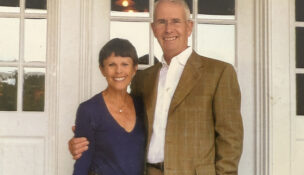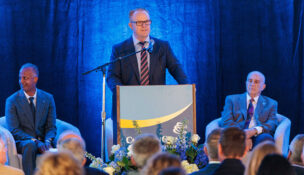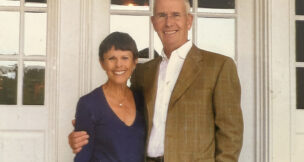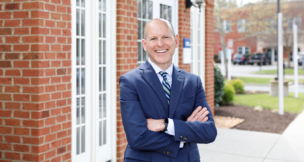A severe case
Virginia’s primary care practitioner shortage
When Staunton native Emma Harrison decided to pursue medicine, her grandfather asked his primary care doctor of several years, Dr. Katie Dunbar, to talk to Harrison about her profession.
Harrison, then an undergraduate student at the University of Virginia, met with Dunbar, a physician at Carilion Clinic Family Medicine – Waynesboro, to discuss family medicine.
“[Dunbar] was brought to tears talking about how much she loves her patients and how she has seen the same patients for decades and [has been] building up those relationships. … And being there through generations, I think, is so special [to] family medicine, and hearing Dr. Dunbar talk about that was really what moved me to go into primary care,” recalls Harrison.
Harrison entered the University of Virginia School of Medicine in fall 2021 and is a member of its Generalist Scholars Program, a four-year mentoring, scholarship and community service program for students pursuing primary care. It accepts six incoming students a year.
Harrison says she wants to practice in a rural area once she graduates, largely because she has seen the need for health care professionals in her Shenandoah Valley community.
Although rural areas have more severe primary care provider shortages, the problem is widespread. And Harrison is part of a shrinking pool of U.S. medical students choosing primary care over other specialties. In 2019, the National Resident Matching Program had a record number of internal medicine positions — 8,116 — with a fill rate of 97.2%, but only 41.5% of the positions were filled by U.S. senior medical students, the lowest percentage on record. Family medicine and pediatrics also offered record numbers of positions and had the lowest fill rates by U.S. seniors on record.
The United States, including Virginia, faces a shortage of primary care professionals that will only worsen as baby boomers age, but governments, medical schools and employers are taking corrective steps to encourage emerging doctors to choose a related specialty.
The Association of American Medical Colleges projects the U.S. will have a shortage of between 17,800 and 48,000 primary care physicians by 2034, according to a June 2021 report.
Dr. Sterling Ransone, board chair of the American Academy of Family Physicians, is a physician practice director at Riverside Fishing Bay Family Practice in Deltaville and knows the difficulty family care practices are having recruiting, particularly physicians seeking their successors.
“My worry is, who’s going to take care of my patients when I’m no longer around?” he says. “I think part of what we do as family physicians, we like to take care of the community. And the worry that a lot of us have is, what’s going to happen to those communities when we’re no longer able to practice?”
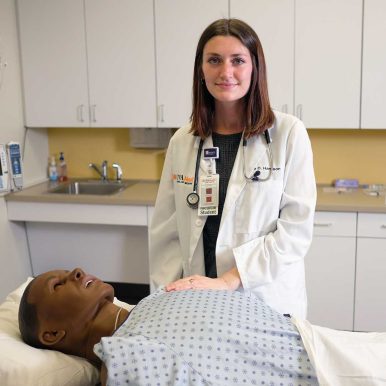
The symptoms
Although primary care can be defined in different ways, the category generally includes family care, general internal medicine, general pediatric care, and obstetrics and gynecology.
In 2019, Virginia had about 85 primary care physicians, nurse practitioners and physician assistants per 100,000 adult residents, which means it ranked No. 25 among states for numbers of primary care clinicians, according to a report from the Virginia Commonwealth University Department of Family Medicine and Population Health and the Ambulatory Care Outcomes Research Network, funded by the Virginia Department of Medical Assistance Services. According to those entities’ 2022 brief, Virginia needs 30% more primary care clinicians, or 1,456 more than the 4,872 it had in 2020 in order for all Virginians to have a primary care clinician they can see yearly.
Fewer than 10% of physicians, nurse practitioners and physician assistants work in non-metro areas of Virginia, although those areas account for 13% of the commonwealth’s population, according to the Virginia Department of Health’s Primary Care Needs Assessment publication.
Primary care clinicians are often patients’ first points of entry into the health care ecosystem, particularly in rural, underserved areas.
“Our training as primary care physicians, we’re trained to take care of a whole host of issues that walk through the office door,” Ransone says. “We’re also the ones who are trained to do preventative care.”
Access to primary care reduces emergency room visits because of that preventive care. Also, “we have relationships with patients,” says Dr. Steven Pearman, vice president of medical operations for Sentara Medical Group. “They trust us. We have pretty high confidence they’re going to come back if something’s not getting better.”
In addition to an expected shortage of health care professionals due to an aging workforce, the U.S. also has a pipeline issue, as graduating medical students are seeking specialty placements outside of primary care. The problem isn’t new, as more primary care clinicians in Virginia are closer to retirement than to starting their careers, according to a 2022 brief from VCU and ACORN. In 2019, about 20% of Virginia’s primary care workforce was 60 or older, while only 12% was under 40.
The diagnosis
One motivator for this choice is economics. Primary care physicians make less than other specialists, due, in part, to insurance reimbursement models.
“Because of the way our health system is set up in the U.S., if you do something physically — you do a surgery, you do a scope, you do something like that — those kinds of things get paid a lot more than sitting and talking with the patient and doing what we call more cognitive medicine,” Ransone says.
In Virginia, the annual mean wage for a family care physician in May 2022 was $224,940, according to data from the U.S. Bureau of Labor Statistics. The annual mean wage for a radiologist in Virginia was $313,420. For an emergency medicine physician, it was $315,290.
In an October 2022 report, the American Academy of Medical Colleges reported the mean education debt of medical school graduates was $205,037.
But primary care practitioners’ passion can outweigh a longer loan repayment timeline.
“While there’s not parity [between primary care and other specialties], it is still a significant amount of money, relevant to many industries,” says Dr. Sean Reed, director of the U.Va. School of Medicine’s Generalist Scholars Program and a UVA Health clinician. “But it’s really more about finding what gets you off the pillow every morning.”
Additionally, some primary care clinicians have retired early or left patient care positions because of burnout, exacerbated by the COVID-19 pandemic and patient vitriol.
“Even now, we have more tools [to combat COVID-19] … but there’s so much new sort of distrust in the health care system that it’s challenging when you go in wanting to be there for a family, for them not to trust in the care you recommend,” says Dr. Sandy Chung, CEO of Fairfax-based Trusted Doctors LLC and president of the American Academy of Pediatrics.
Trusted Doctors, which has about 180 clinicians across Virginia, Maryland and Washington, D.C., had to close a location in Maryland and reduce hours at a clinic in Virginia because of staffing shortages, Chung says.
The number of primary care practices that had a primary care clinician leave nearly doubled from 2018 to 2022, from about 40% to nearly 80%, according to the 2022 brief from VCU and ACORN. In 2022, a little over 40% of clinicians left practices to retire early.
Virginia’s government has taken some steps to help, adding $82 million to the budget approved in 2022 for Medicaid reimbursements for primary care providers.
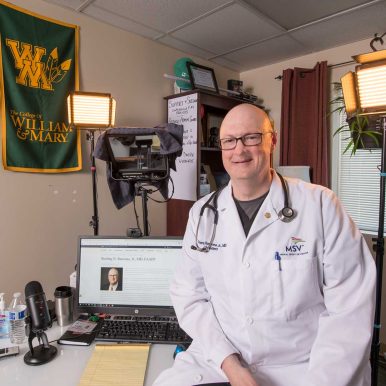
Treatment options
On the pipeline front, Virginia medical schools are seeking to cultivate medical school students’ interest in primary care through targeted programs, often including financial incentives.
At U.Va., if students fulfill the Generalist Scholars Program requirements and match into a residency in one of four primary care fields — family medicine, internal medicine, pediatrics or combined internal medicine-pediatrics — they receive a $40,000 scholarship.
In their third semester, GSP students hold a “Primary Care Week” focused on drawing medical school students’ attention to the primary care field.
U.Va. also encourages rural primary care. Harrison received the full-coverage A.K. Turner Scholarship on the condition that she practice general medicine five years in a rural Virginia area following her medical residency.
“Serving a small community as their doctor has been my dream forever, but the fact that U.Va. is fully … supporting me in this is just incredible,” she says.
At VCU’s School of Medicine, the Department of Family Medicine and Population Health’s division of epidemiology offers the Family Medicine Scholars Training and Admission Track (fmSTAT), which creates four-year cohorts of about eight to 10 students who receive additional mentorship, seminars and research opportunities. In their fourth year, students receive small scholarships, which vary but average about $10,000, says department chair
Dr. Scott Strayer.
Over the last 12 to 13 years, VCU has averaged 25 residents who match in primary care, and about 35% of those match in-state, Strayer says.
For their part, employers are upping the ante on recruitment and retention efforts for primary care physicians. Some health systems cite their missions and workplace wellness efforts as strong draws for clinical practitioners, but many employers are also offering financial incentives.
The Bon Secours St. Francis Family Medicine Residency, based in the health system’s St. Francis Medical Center in Midlothian, offers a stipend to retain residents. If a second-year resident commits to working at Bon Secours upon completing his residency, he will receive $72,000 in his second year and again in his third year.
“We’ve been very successful in retaining people that way. … I can tell you that that’s also very attractive to some. I have some medical students who decide to come here because of that. It’s a big help,” says Dr. Victor Agbeibor, the St. Francis residency program director.
Sentara Health provides stipends to some residents who agree to sign employment agreements in their second year, but Sentara declined to disclose amounts.
Physicians who work for nonprofit health systems like Roanoke’s Carilion Clinic for 10 years might qualify for the federal Public Service Loan Forgiveness program, which forgives remaining direct loan balance after 120 monthly payments.
Carilion also offers tiered loan repayment assistance, usually for four years. Carilion’s repayments vary, but the standard is about $10,000 per year, although amounts increase for physicians in rural areas, says Dr. Michael Jeremiah, Carilion senior vice president and chair of its Department of Family and Community Medicine.
Calling in consults
The state government also will match an organization’s loan support for qualifying practitioners in federally designated Health Professional Shortage Areas, up to $140,000 for a four-year commitment, via the Virginia State Loan Repayment Program, administered by the Virginia Department of Health.
Carilion offered loan repayment assistance for Dunbar’s position. “They ended up paying off my loans before I met all [of the fixed amount of assistance]. I had less loans than they offered [repayment for],” says Dunbar, who graduated from Eastern Virginia Medical School in 2009 and was able to finish repaying her loans with Carilion’s help in 2020.
In Fairfax, where it’s competing with area hospitals and health systems to hire primary care physicians, Trusted Doctors has offered sign-on bonuses, loan repayment assistance and stipends for moving expenses, Chung says. The practice’s payment rates for nurses have risen about 30% from pre-pandemic rates, but revenue has remained flat and other expenses, like rent, have risen.
“My practice is a big practice,” says Chung, adding that “it’s hard, especially for smaller practices, to be able to afford this.”
On the reimbursements front, Carilion converted 17 of its 42 primary care practices to meet the Centers for Medicare and Medicaid Services’ rural health clinic requirements, allowing those facilities to receive slightly higher reimbursement rates. The health system had to make structural changes, such as employing a nurse practitioner or physician assistant at each clinic, as well as meet all accreditation requirements. The CMS State Operations Manual chapter on the certification process for rural health clinics totals 467 pages.
Trusted Doctors also sought help at the source. It worked with an insurer to change its payment models so that behavioral health and preventive care work received larger reimbursements. But that increase isn’t about making a profit, Chung explains: “When we’re talking about more, we’re talking about not losing money, getting ourselves to break even, so basically paying more so that it’s sustainable.”
There’s hope for correcting the imbalance between primary care and other specialties, says Clark Barrineau, the Medical Society of Virginia’s assistant vice president of government affairs and public policy. “I don’t feel in my bones that we are not capable of fixing this, or at least improving upon it” by focusing on wellness in retention efforts and economic incentives in recruitment efforts, Barrineau says. “The good news is that everyone sees the problem.”
Despite the heavy workload and disparate pay, primary care providers say their passion is what keeps them in their chosen field.
“Even though the work is a lot, it’s always rewarding. There’s never a day that I don’t feel like I was doing something fulfilling and making a difference,” Dunbar says.
Taking care of the whole person, whether it’s a cough, a rash, a sore knee or something more serious, is enticing, Harrison says. “Being the primary care physician, you really develop a sense of trust with your patients. And that’s just what medicine is all about, you know — taking care of people.”
g

